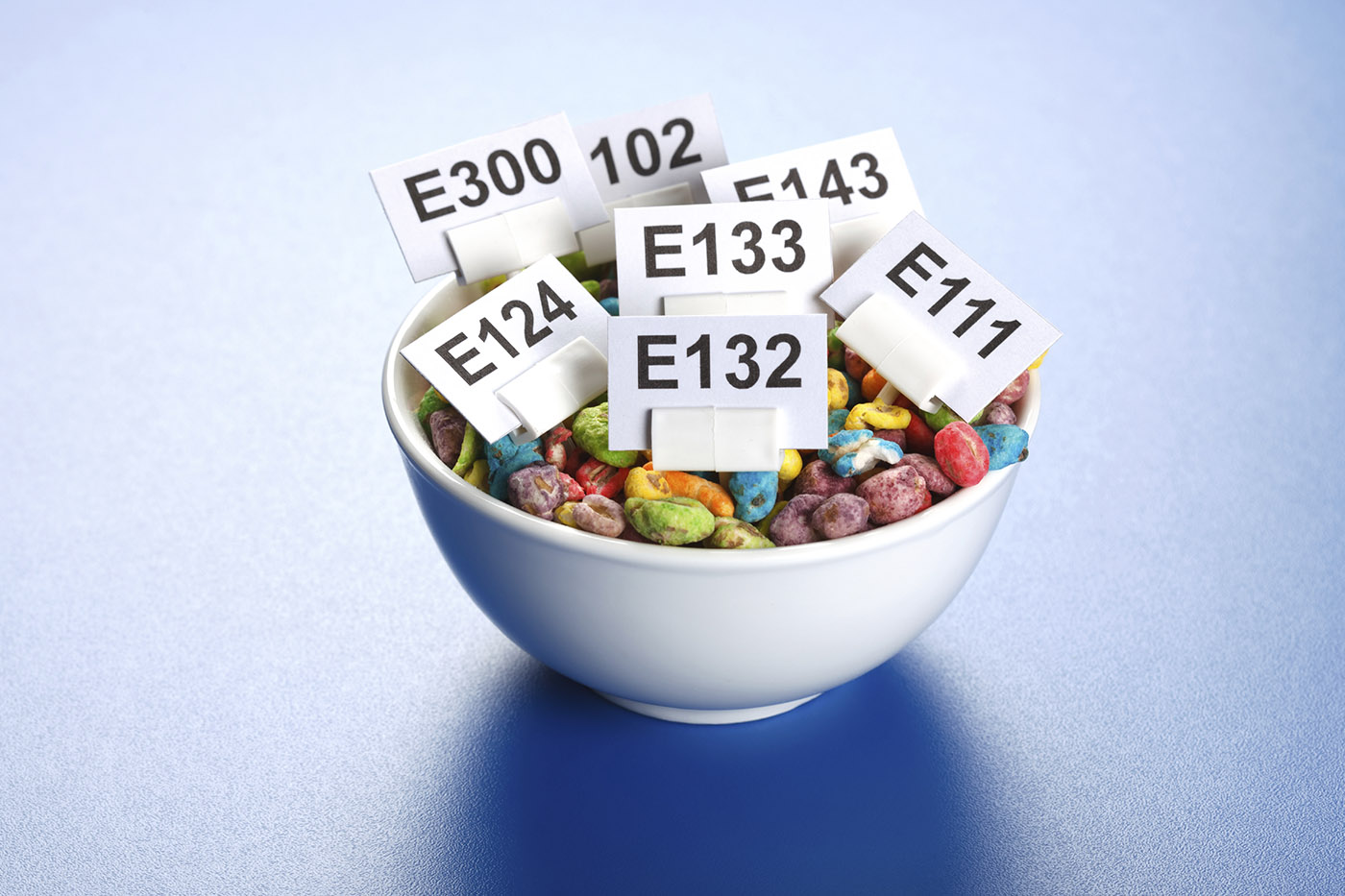Eating processed foods is a fast path to inflammation and obesity. It can also put you at risk for diabetes, heart disease, and even cancer.
It’s a problem that goes deeper than just trans fats, carbs, and sugars—as dangerous as those are. Making things worse? These carcinogens may be something you rarely—if ever—think about.
They’re in just about every food that comes in a box, bottle, can, or package. And Big Food doesn’t try to hide them. You’ll spot these quickly in the ingredients list on their products. But there are a few things about them they’ve been hiding from us…
Like how much of them are in the food you’re eating—and what they can do to your body.
A 2010 report by the Center for Science in the Public Interest found a link between a specific additive you’ll find in beverages, candies, and pet food…and brain tumors. It also found that a common ingredient in cereal and baked goods may consist of up to 13% carcinogenic additives. And this isn’t the only concern…
Eating these toxic additives can do some major damage to your health over time. They may even be causing cancer to grow—and thrive—in your body.
We’re talking about artificial dyes and colorings.
Researchers at Purdue University found that single servings of many of the foods they tested had significantly higher levels of dye than the dangerous amounts found in earlier studies.1
For instance, just 26 mg of these dyes can cause hyperactivity—even allergic-like reactions—in children. Yet a single bowl of Cap’n Crunch Oops! All Berries cereal contains 41 mg of them. But screaming kids and red, blotchy skin may be the least of your worries…
The animal studies testing the safety of these dyes only looks at individual dyes. They don’t consider combinations. It’s not surprising to find out that the chemical industry that makes these dyes paid for these studies.2
Eating two cups of Kraft Macaroni & Cheese, a small bag of Skittles, and eight ounces of Crush Orange soda will give you 102 mg of artificial colorings. This means Blue #1, Blue #2, Red #40, Yellow #5, and Yellow #6… And that’s just from the Skittles alone.3
Meanwhile, companies based in the U.S. have eliminated these dyes…in their U.K. products.
In the U.S., the strawberry variety of Kellogg’s Nutri-Grain Cereal Bars uses Red #40, Yellow #6, and Blue #1. But in the U.K., these same bars use beetroot and paprika extract for their coloring.4
This was the result of a government-funded study questioning the safety of Yellow #5. But it was also due to public demand. This even led to the E.U. requiring warning labels on most dyed foods.
They can make their products without these additives. But most companies choose profit over your health. Some companies in the U.S. have begun to step up. But they can do much better…
Kraft removed the artificial dyes from some of their kid-oriented macaroni products—but not their most popular variety. Frito-Lay took the dyes out of many—but not all—of their chips. Even Chick-fil-A got rid of the Yellow #5 in their chicken soup…why it was there in the first place, we don’t know.5 But there are easy ways to avoid the health hazards of these dyes.
The best way to dodge artificial dyes is to not buy processed foods at all. Spend your money on organic green veggies and grass-fed beef instead. If you insist on getting foods that come in a box or package, do your homework. If you see any sort of fake coloring in it, leave it on the shelf. Limiting your exposure to these toxic dyes may help you avoid unpleasant—even life-threatening—side effects.
Like this Article? Forward this article here or Share on Facebook.
References:
1http://cpj.sagepub.com/content/early/2014/04/21/0009922814530803.abstract
2http://cspinet.org/new/pdf/food-dyes-rainbow-of-risks.pdf
3http://cspinet.org/new/201405071.html
4http://www.huffingtonpost.com/laurie-david/post_1891_b_843577.html
5Idem

